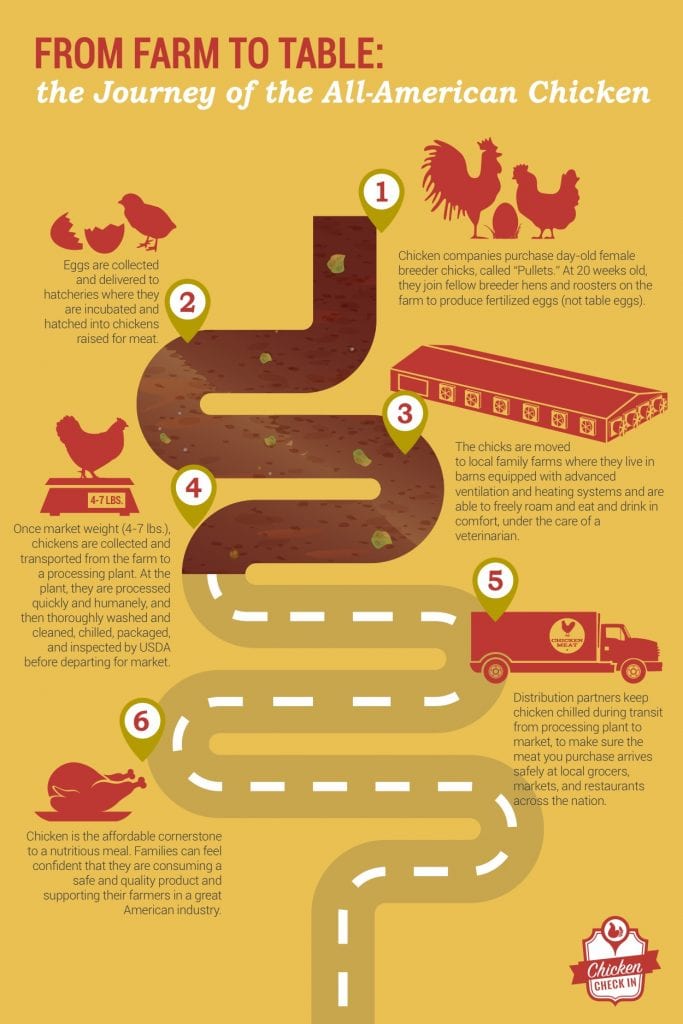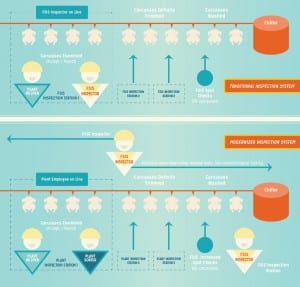 Do you ever find yourself picking up packages of chicken examining the labels — such as enhanced, retained water, antibiotics, and wondering what exactly does that mean? Cathy Isom has found the new tool making it easier for consumers to shop for chicken. That story is ahead on This Land of Ours.
Do you ever find yourself picking up packages of chicken examining the labels — such as enhanced, retained water, antibiotics, and wondering what exactly does that mean? Cathy Isom has found the new tool making it easier for consumers to shop for chicken. That story is ahead on This Land of Ours.
Confusing Chicken Labels
From: Chickencheck.in

When you shop for chicken at the market, there are lots of different chicken labeling terms to consider. Whether organic, cage-free or no added hormones, it’s easy to be confused about what all the labels on chicken in the store actually mean. To help make sense of these chicken labeling terms, this infographic explains some of the most common labeling terms on chicken packaging so you can feel more informed the next time you buy chicken for your family.
Most people are at least three generations removed from the farm, which means the average person doesn’t have first-hand knowledge of what life on a farm is like – for either farmers or the animals they care for. Because of this, many of the ideas of what happens on a farm come either from romanticized images on film or TV, or worrisome images and stories told out online and in the media. We know that questions about animal welfare are top of mind as people want to know more than just that the food they purchase is safe for them – they want to know it was raised humanely and sustainably.
To help you get a better sense of what life is really like for farm animals, we invite you to see what a day in the life is like for a broiler chicken (a chicken raised for meat). Learn why we raise chickens the way we do, the thought and research that goes into their housing, food, breeding, and medical care, and how as farmers, veterinarians, and nutritionists, we’re always working to do better.
Chickens’ First Day on the Farm
After fertilized eggs are incubated (kept warm and rotated) for 21 days at a hatchery, chicks are hatched, and within hours they are transported to the farm. Chicks are delivered in crates – 100 to a crate, around 25,000 chicks per barn. All birds on any given chicken farm will be the same age, come from the same hatchery, and stay together for the remainder of their lives – this is to ensure traceability (in case there is any issue), and for biosecurity reasons (to reduce the threat of illness or bacteria). The chicks go all-in to the farm at the same time, and the birds go all-out to processing at the same time.

There are a lot of stops along the way from the chicken farm to your dining room table. From the hatchery where broiler chickens (chickens raised for meat) are hatched, to barns on family farms where chickens are raised under the watchful eye of farmers and veterinarians, to processing, distribution and ultimately your local market or restaurant, chicken makes quite the journey to get from our farm to your table! See (and share) the journey of the all-American chicken from the chicken farm to your table in this infographic.
In preparation for the arrival of baby chicks, barns are cleaned and prepped. Farmers lay out litter and fresh water, and feed that is specially formulated for their nutritional needs at this age, to help the chicks learn how to find food. Temperatures in the barn are raised to kill off any pathogens that may exist, and soil temperatures are also closely monitored – a 2” chicken cares much more what the floor feels like than the ceiling!
When the chicks arrive, they’re placed into a designated area of the barn, sectioned off to keep them close together where temperatures are optimal during the brooding phase – the time before they lose their soft, downy fuzz and begin to mature.
Placement of chicks can seem surprising to those who’ve never seen it, but care is taken to ensure that the chicks are not harmed when being moved from crate to barn, and experienced farmers, who are trained in proper animal welfare procedures, keep the chicks’ welfare at top of mind during this process.
Baby chicks arrive at the farm within 24 hours of hatching. See what their first days on the farm are like – from learning to find food and water, to measures taken to keep them safe and comfortable.
The National Chicken Council’s Chicken Check In Farm to Table page provides more details about the journey of the all-American chicken from the chicken farm to your table.
The following is from: U.S. Poultry & Egg Association
Raising Chickens and Turkeys… for Today and Tomorrow

To ensure the chicken you buy at the store is safe and clean, the USDA developed the modern poultry inspection system. These safety standards are applied to all chicken products. The modern chicken inspection system consists of examination, trimming, washing and chilling. Food Safety and Inspection Service (FSIS) inspectors further ensure safety by conducting microbiological tests.
You are invited to take a peek behind America’s dynamic poultry industry in this new video from the U.S. Poultry & Egg Association. From the hatchery to the farm, chickens and turkeys follow quite a journey as they feed the demands of a hungry world. The poultry industry is well-recognized for its leadership in addressing the world demand for food that is safe, rich in healthy protein and affordable. Through research and innovation the industry will continue to be at the forefront of advances in food production, and all the while, preserving the heritage of the family farm and contributing to a healthier planet. The American consumer – along with the rest of the world – deserves nothing less. www.uspoultry.org

When it comes to chicken and how to cook it properly, salmonella is a common concern. Even though chicken is usually associated with salmonella, the top causes of salmonella illnesses are actually fruit and vegetables. In addition, salmonella on whole chickens has decreased by 66 percent over the last 5 years. Learn key salmonella stats and simple tips to prevent illness in this infographic from the National Chicken Council.









